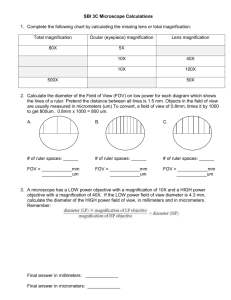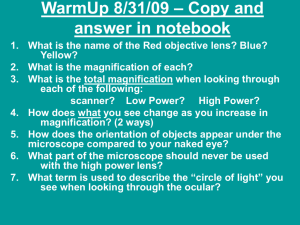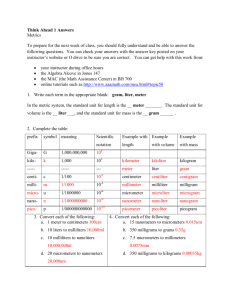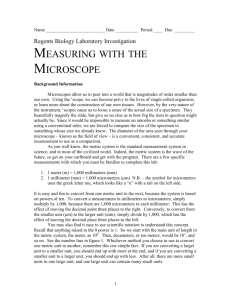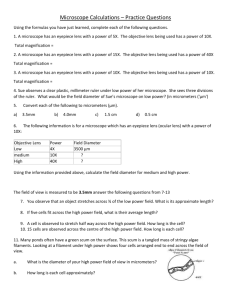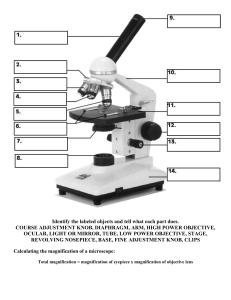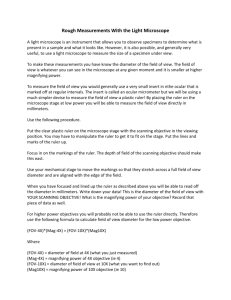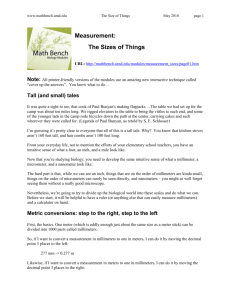here - Worcester Think Tank
advertisement
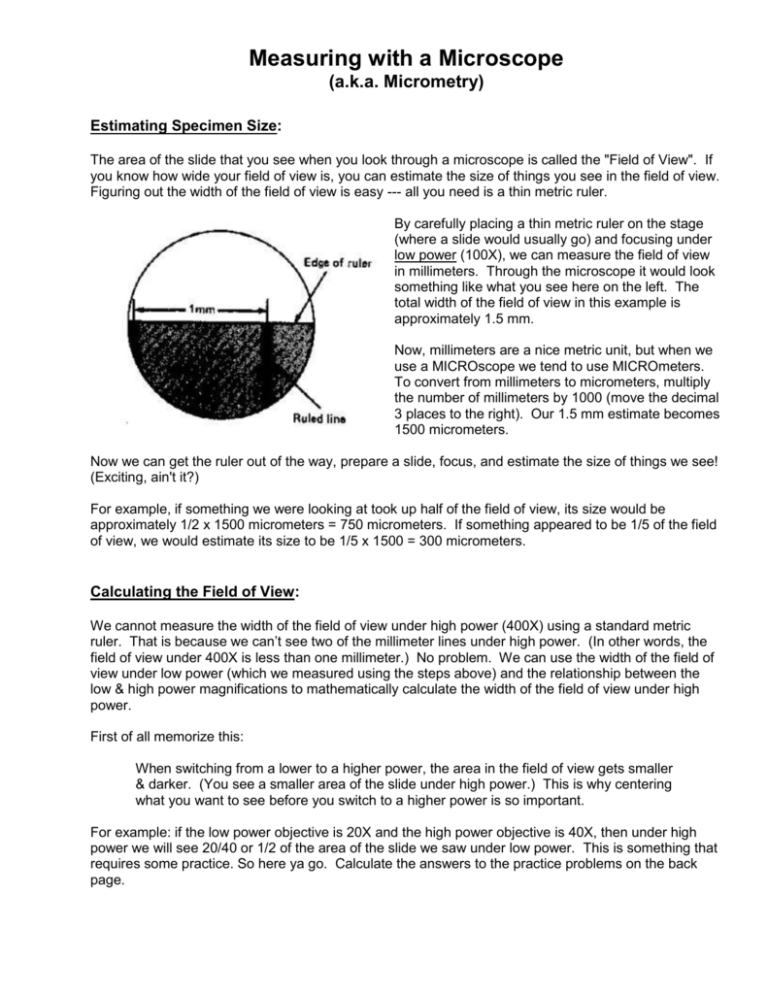
Measuring with a Microscope (a.k.a. Micrometry) Estimating Specimen Size: The area of the slide that you see when you look through a microscope is called the "Field of View". If you know how wide your field of view is, you can estimate the size of things you see in the field of view. Figuring out the width of the field of view is easy --- all you need is a thin metric ruler. By carefully placing a thin metric ruler on the stage (where a slide would usually go) and focusing under low power (100X), we can measure the field of view in millimeters. Through the microscope it would look something like what you see here on the left. The total width of the field of view in this example is approximately 1.5 mm. Now, millimeters are a nice metric unit, but when we use a MICROscope we tend to use MICROmeters. To convert from millimeters to micrometers, multiply the number of millimeters by 1000 (move the decimal 3 places to the right). Our 1.5 mm estimate becomes 1500 micrometers. Now we can get the ruler out of the way, prepare a slide, focus, and estimate the size of things we see! (Exciting, ain't it?) For example, if something we were looking at took up half of the field of view, its size would be approximately 1/2 x 1500 micrometers = 750 micrometers. If something appeared to be 1/5 of the field of view, we would estimate its size to be 1/5 x 1500 = 300 micrometers. Calculating the Field of View: We cannot measure the width of the field of view under high power (400X) using a standard metric ruler. That is because we can’t see two of the millimeter lines under high power. (In other words, the field of view under 400X is less than one millimeter.) No problem. We can use the width of the field of view under low power (which we measured using the steps above) and the relationship between the low & high power magnifications to mathematically calculate the width of the field of view under high power. First of all memorize this: When switching from a lower to a higher power, the area in the field of view gets smaller & darker. (You see a smaller area of the slide under high power.) This is why centering what you want to see before you switch to a higher power is so important. For example: if the low power objective is 20X and the high power objective is 40X, then under high power we will see 20/40 or 1/2 of the area of the slide we saw under low power. This is something that requires some practice. So here ya go. Calculate the answers to the practice problems on the back page. Problem #1: Ocular power = 10X Low power objective = 20X High power objective = 50X a) What is the highest magnification you could get using this microscope? b) If the diameter of the low power field is 2 mm, what is the diameter of the high power field of view in mm? In micrometers? c) If 10 cells can fit end to end in the low power field of view, how many of those cells would you see under high power? Problem #2: Ocular power = 10X Low power objective = 10X High power objective = 40X The diagram shows the edge of a millimeter ruler viewed under the microscope with the lenses listed above. The field shown is the low power field of view. a) What is the approximate width of the field of view in micrometers? b) What would be the width of the field of view under high power? c) If 5 cells fit across the high power field of view, what is the approximate size of each cell? Problem #3: Ocular = 10X Low power objective = 20X High power objective = 40X The picture shows the low power field of view for the microscope with the lenses listed above. a) What is the approximate size of the cell in micrometers? b) What would be the width of the high power field of view? c) How many cells like the one in the picture could fit in the high power field of view?

